NAPLAN writing is one of the four domains tested as part of the NAPLAN test.
As the name suggests, students are required to give a written response to the asked question. In NAPLAN writing, students are given a “writing stimulus” (sometimes called a “prompt”—an idea or topic) and asked to write a response in a particular genre (narrative or persuasive writing).
Different prompts are used depending on the testing day and student year level. These writing prompts target the full range of student capabilities expected of students from Years 3 to 9.
NAPLAN writing is the first test to be scheduled in the NAPLAN exam. Format and duration of NAPLAN Writing test is as below:
| Student Year | Time Allotted | Mode of NAPLAN Writing Test |
| Year 3 | 40 mins | On Paper |
| Year 5 | 42 mins | Online |
| Year 7 | 42 mins | Online |
| Year 9 | 42 mins | Online |
The writing stimulus can be in two formats either:
- The persuasive writing, and
- The narrative writing
How Is the NAPLAN Writing Test Marked?
As we know that NAPLAN is a tailored test. All other responses and the writing task will be marked by trained and independent markers.
Students’ writing is marked by assessors who have received intensive training in marking the NAPLAN exam. Each state and territory’s test administration bodies are in charge of marking the writing exams that fall within their purview. The same training, quality assurance procedures, and grading criteria are applied to all markers throughout Australia.
NAPLAN Persuasive Writing
Persuasive writing is a piece of written material or an article that attempts to persuade readers to a particular point of view on an issue. Persuasive writing may express opinions, discuss, analyze, and evaluate issues. It may also be an entertaining or informative piece of a written article.
Persuasive writing can be formal or informal, but it requires the writer to assume authority on the subject matter and develop it in an orderly and rational manner. The content should be in such a manner that it must give a point of view with proper explanation to support the narrative.
The main structural components of the persuasive text are as follows:
- Introduction: Start with an introduction. An introduction lets a reader know what the article is all about.
- Development of argument (body): Write your opinion on the topic given, give reasons for your viewpoint, and explain the reasons for your opinion.
- Conclusion: Finish with a conclusion. A conclusion sums up your reasons so that the reader must be convinced of your opinion.
NAPLAN Persuasive Writing Prompt Year 3 and Year 5
The question below is from the NAPLAN Writing prompt 2015 for Year 3 & Year 5.
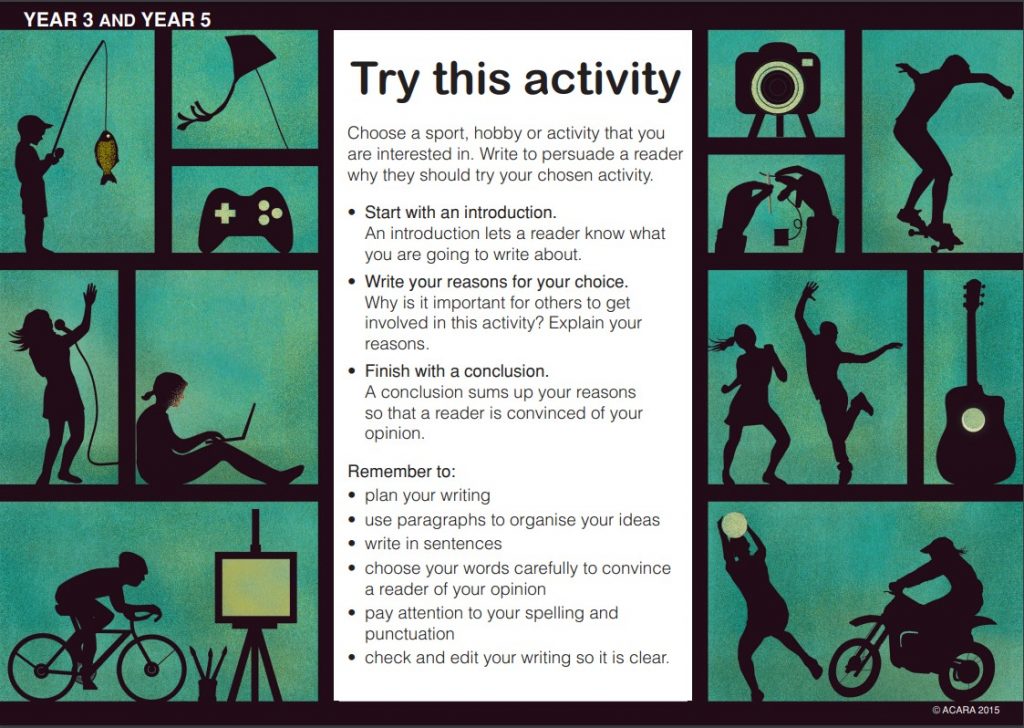
NAPLAN Persuasive Writing Prompt Year 7 and Year 9
The question below is from the NAPLAN Writing prompt 2015 for Year 7 & Year 9.
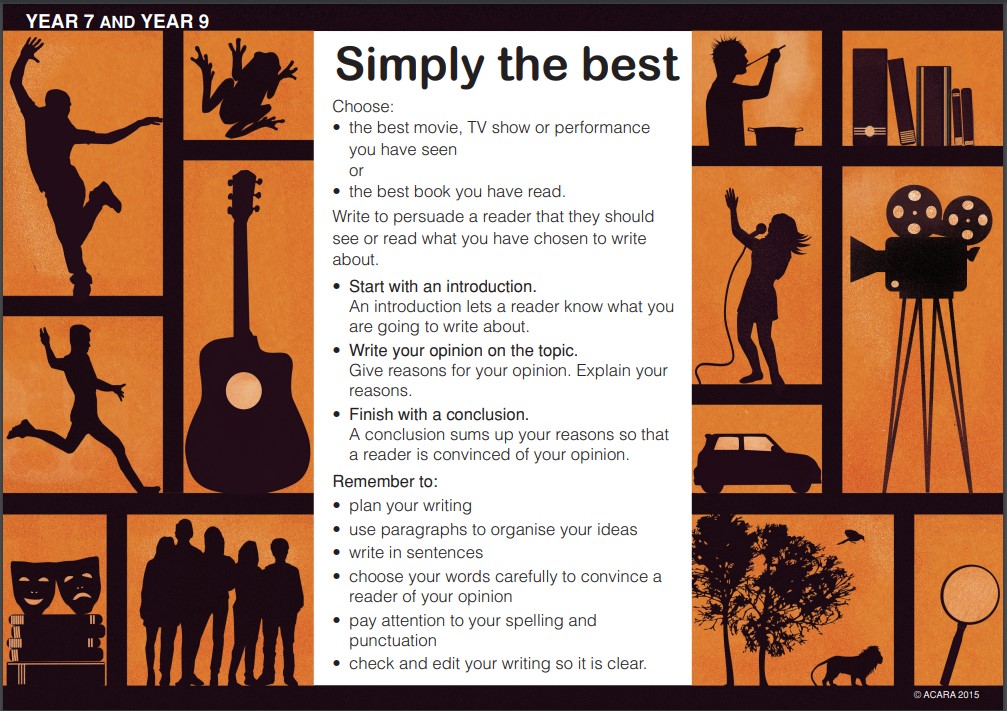
NAPLAN Narrative Writing
Narrative writing is used to narrate events and to create, entertain, and emotionally move the audience. Other social purposes of narrative writing may be to inform, persuade, and socialize.
The students are required to give a written response to the provided question in a narrative style of writing. The task provided is the same for all the students appearing for the NAPLAN in Years 3, 5, 7, and 9. The sample question provided below will help you understand the task better.
The main structural components of a narrative are orientation, complication, and resolution. Let’s understand the narrative writing question format better with an example:
NAPLAN Narrative Writing Prompt Year 3 and Year 5
The question below is from the NAPLAN 2016 Writing Test for Year 3 & Year 5.
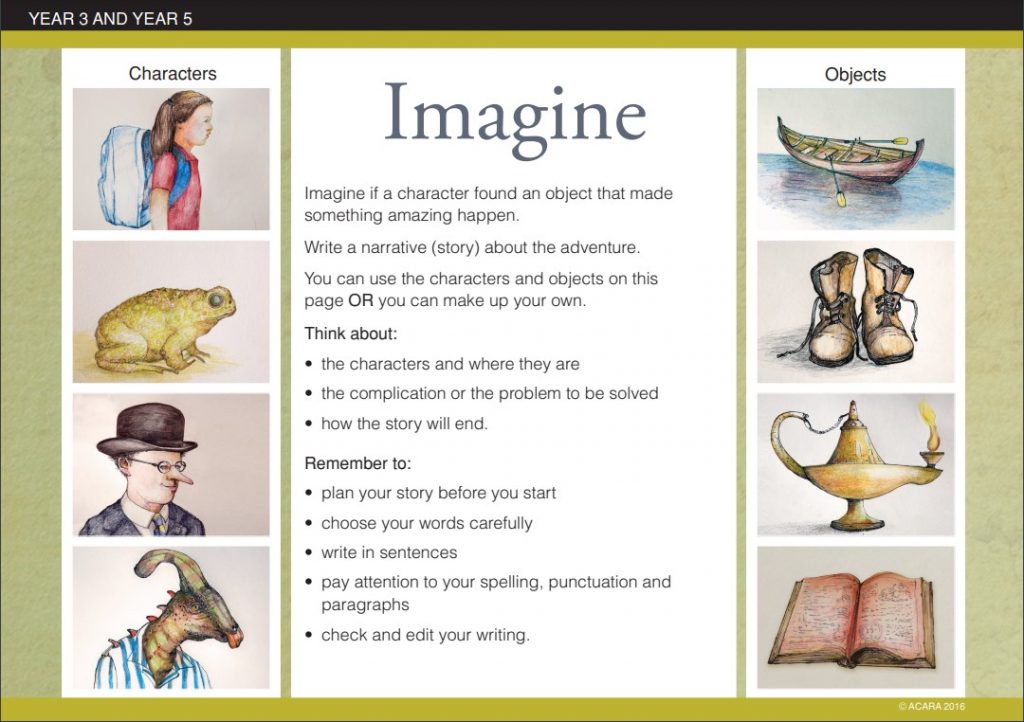
NAPLAN Narrative Writing Prompt Year 7 and Year 9
The question below is from the NAPLAN 2016 Writing Test for Year 7 & Year 9.
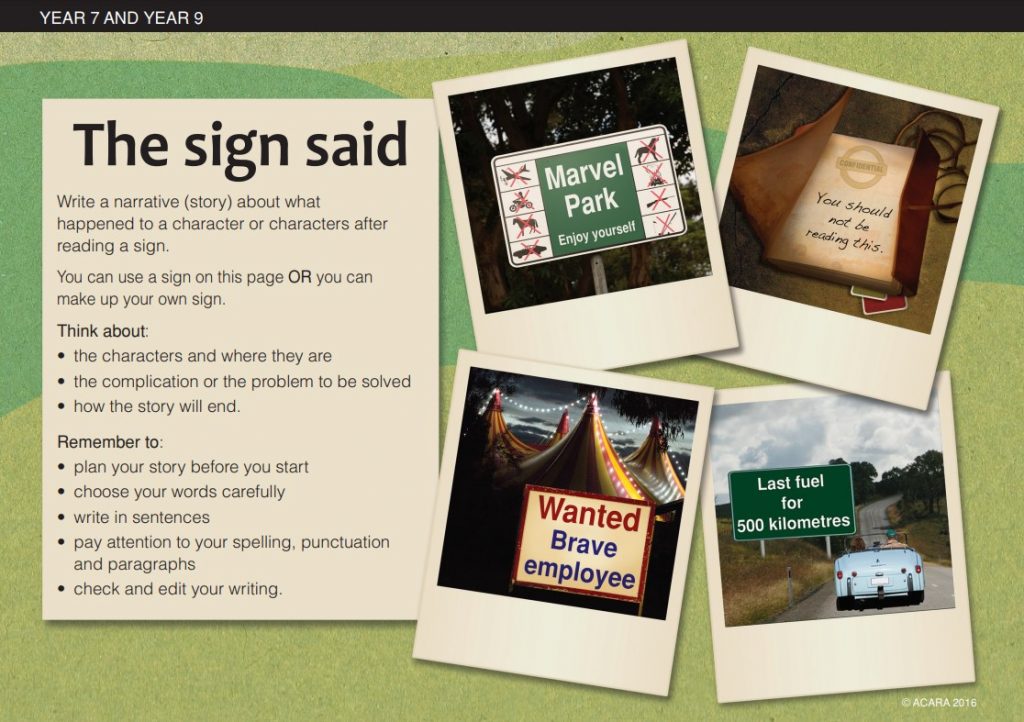
How To Practice for NAPLAN Writing
NAPLAN past papers are the best resource to prepare for the NAPLAN Writing test.
Download NAPLAN Past Papers
It is advised to take the tests in a timed environment within the specified duration to replicate the real exam environment.
Wiingy provides NAPLAN practice tests and private online NAPLAN tutoring. You can Enrol for a free demo session to know more about our teaching plan.
NAPLAN Writing Marking Guide
Students’ writing is assessed using an analytic criterion-referenced marking guide, consisting of a rubric containing ten marking criteria and the score range. The ten criteria and their range score are given below:
10 criteria to be assessed in writing are as follows:
| S.No | Criterion | Description | Range of score |
| 1. | Audience engagement | Writer’s capacity to engage, orient, and affect the readers. | 0-6 |
| 2. | Text structure | The choice of words, phrases, etc. to add emotions to the text. | 0-4 |
| 3. | Idea | Built of a narrative. | 0-5 |
| 4. | Character and setting | Building a character and the environment, place, and time of the play. | 0-4 |
| 5. | Vocabulary | Language usage. | 0-5 |
| 6. | Cohesion | Use of word association, threads, referring words, and substitution. | 0-4 |
| 7. | Paragraphing | To segment different topics and guide users. | 0-3 |
| 8. | Sentence structure | Framing grammatically correct, meaningful, and structurally sound sentences. | 0-6 |
| 9. | Punctuation | Current usage of punctuation. | 0-5 |
| 10. | spelling | Accuracy of spelling. | 0-6 |
NAPLAN Bands
Each NAPLAN scale is divided into 10 bands used to report student progress through Years 3, 5, 7, and 9. A national minimum standard is being provided and assigned to students on the assessment scale for each year level based on their performance. The chart of the assessment is given below:
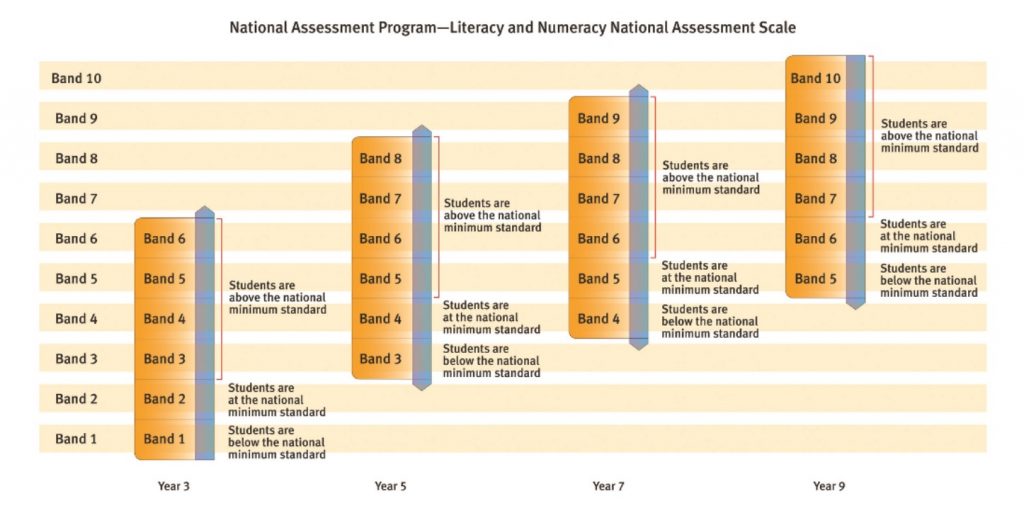
Understanding the NAPLAN Result Bands
Year 3:
| Band 1 | Students are below the national minimum standard. |
| Band 2 | Students are at national minimum standards. |
| Band 3 and above | Students are above national minimum standards. |
Year 5:
| Band 3 | Students are below the national minimum standard. |
| Band 4 | Students are at national minimum standards. |
| Band 5 and above | Students are above national minimum standards. |
Year 7:
| Band 4 | Students are below the national minimum standard. |
| Band 5 | Students are at national minimum standards. |
| Band 6 and above | Students are above national minimum standards. |
Year 9:
| Band 5 | Students are below the national minimum standard. |
| Band 6 | Students are at national minimum standards. |
| Band 7 and above | Students are above national minimum standards. |
Written by
Shefali SundramReviewed by
Review Board
